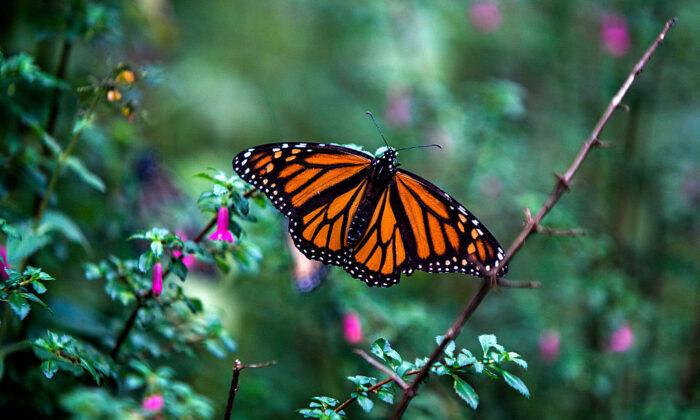Canada’s federal government is considering changing the status of Monarch butterflies to “endangered,” a move that may limit human activities in their habitat.
Some expressed concern that permits would be required to remove milkweeds, the plants on which Monarchs lay their eggs. The ministry did not specify which companies expressed this concern, saying only that one of them was a “Crown corporation” and the other an “industry organization.”
Most of the 12 responses the ministry received favoured listing the butterfly as endangered, but these two organizations “expressed concern that the reclassification of the Monarch could restrict their ability to perform their activities.”
Herbicides
The “industry organization” that expressed concern is likely a forestry company, as it asked that the forestry industry’s use of herbicides be considered separately from agricultural use due to differences in scale and quantity. The forestry industry uses herbicides to prevent the growth of competing vegetation where it has planted seedlings for future harvesting.The ministry’s impact assessment notes that farmers may take a hit if herbicide use is restricted to protect milkweed.
“Agricultural producers of corn, soy, canola and wheat crops on federal lands may carry losses in profits in the event that certain herbicide application activities are not eligible for a permit,” the impact assessment said.
The ministry expects impacts to be limited to federal lands, and the government estimates a loss in agricultural production on these lands worth up to $3 million over the course of 10 years.
Calls for Protection
It has taken seven years for the government to officially follow through on COSEWIC’s assessment, though the ministry has been at work in the background studying the problem.Ministry spokesperson Hannah Boonstra said via email that the government “acknowledged receipt of COSEWIC’s assessments” on May 10, initiating the current public consultation and proposal to officially change the butterfly’s status.
The Monarch butterfly is a pollinator that has been called a “canary in the coal mine” for other essential pollinators.
The delicate creatures migrate thousands of kilometres, overwintering in Mexico. COSEWIC notes that it’s hard to quantify Canada’s Monarch butterfly population.
“Population size estimates are not available for Monarchs in Canada. Each fall hundreds of thousands of Monarchs migrate through Long Point in southern Ontario but it’s unknown what proportion of the Canadian population these individuals represent,” the assessment said.
The overwintering population in Mexico declined more than 80 percent from 1994 to 2015, it said. Habitat disturbances outside of Canada, including deforestation in Mexico, have also contributed to the butterfly’s decline.
In Canada, the butterflies are often found along the north shores of the Great Lakes, COSEWIC says, though they are all over Canada (except Newfoundland and Labrador).
Milkweeds are the sole food for Monarch caterpillars and the plants tend to grow in periodically disturbed habitats such as roadsides, fields, wetlands, prairies, and open forests.





